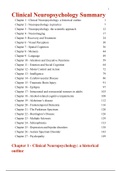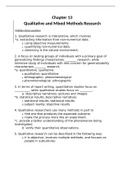Samenvatting
Clinical Neuropsychology Book - Summary
This is an extensive summary of the book 'Clinical Neuropsychology' that is required for the specialization course Clinical Neuropsychology. It includes all chapters and is written in English.
[Meer zien]






